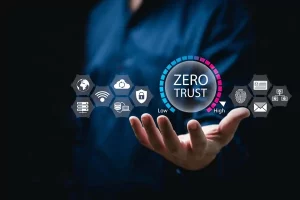What is Bulk Data Collection?
- Posted by 3.0 University
- Categories Emerging Technology
- Date August 28, 2024
- Comments 0 comment
Let’s discover why there’s a need for Bulk Data! One must collect large amounts of data to get a complete view of the threat landscape.
However, it is difficult to perform the storage, processing, and analysis of large data volumes.
Effective Data Management Techniques
Organizations can employ various data management practices, such as filtering, correlation, and enrichment, to better manage massive amounts of data.
Adopting these data management practices allows for the extraction of only the relevant data and actionable intelligence.
Data Processing in Threat Intelligence
- Structuring and Normalizing Data
One of the basic purposes of data processing is to organize randomly scattered data into a structured form.
Normalization is the process that ensures uniformity and simplifies the analysis and interpretation processes.
- Tools for Data Processing
There are various data processing tools, such as SIEM (Security Information and Event Management) systems that are capable of aggregating the data and analysing it from the different sources available.
Threat Data Analysis: Methods and Tools
- Statistical Data Analysis
The procedures in statistical analysis entail making use of statistical methods to discover patterns in the data and point out anomalous data.
As a result, it is possible to not only track down unsolicited activity but also detect possible attacks.
- Analysis of Competing Hypotheses
This method creates lists of hypotheses, matches the most frequently supported one by the evidence, and discards the others.
This tool creates the opportunity to conduct data-driven proofs.
Intelligence Reporting and Dissemination
Importance of Reporting
Creating detailed intelligence reports turns out to be vital for the safe dissemination of risk awareness data. The report should be very clear, concise, and structured in such a way that it offers the audience practical recommendations.
Give the actionable steps in bold letters.
Methods for Effective Dissemination
The foremost goal of effective dissemination is to assert arcane knowledge to more informed people at the most pertinent moment.
Some of the recipients may include internal security, executives, and partners outside the organization.
Practical Applications of Threat Intelligence
- Informing Security Strategies
Threat intelligence plays a crucial role in developing and refining security strategies, which draw inspiration from the latest threats.
- Proactive threat hunting
Through learning the TTPs of cyber actors, the security analyst teams can also proactively look around their systems to notice the spread of the cyber threat.
Building a Threat Intelligence Program
Essential Components
A comprehensive threat intelligence program consists of data acquisition, processing, analysis, and reporting.
Consequently, it necessitates the presence of a skilled clearing team and the right equipment to assist them in these activities.
Best Practices
Companies should clearly define their objectives, use reliable sources of data, and further ensure that their threat intelligence moves are in accordance with the company’s defence policy.
The Role of Automation in Threat Intelligence
Automation Tools
Automation greatly enhances the domain of threat intelligence by processing and analysing massive amounts of data quickly.
Machine learning algorithms that base decisions on patterns and trends are quite accurate because they analyse much more quickly than human analysts.
Benefits of Automation
The utilities that constantly automate everyday tasks allow skilled workers to focus on more sophisticated problems like data interpretation or strategic decision-making.
Training & Certification for Threat Intelligence Analysts
Skills Required
Threat intelligence analysts comprise a wide range of skills that not only make them experts in tasks like data analysis, threat modelling, and report writing, but also fortify them with the required acumen.
They should also have knowledge of the different tools and techniques used in threat intelligence.
Recommended Certifications
CTIA or Certified Threat Intelligence Analyst, and GIAC Cyber Threat Intelligence or GCTI certifications are a few of them.
Besides, they provide them the knowledge and proof that is required to do well in this field.
The Future of Threat Intelligence
Emerging Trends
This illustrious field of Threat Intelligence is exponentially evolving as new technologies and methods emerge to grasp the ever-increasing complexity of cyber threats.
Growth of the CTI Market
According to a recent report, the global threat intelligence market is projected to reach a staggering USD 12.6 billion by 2025.
Over the years, a significant increase in the demand for threat intelligence has been witnessed and the reason has been attributed to the rise in cyber-crime, threat breaches, and the growing number of sophisticated attacks in highly security-conscious sectors.
In addition, the breaches in many organizations are driven by financial or espionage motives, leading to significant disruptions in business operations. This has become a major concern for these organizations, and as a result, there is a growing demand for threat intelligence solutions and services.
Summing it up,
Cyber threat intelligence requires significant attention in today’s digital era. Organizations can only gather essential information about threats and prepare for potential cyber hazards or malfeasance incidents by using threat intelligence feeds and various sources.
The cyber community uses threat intelligence, a recently released feature, in every aspect, Real-time threat detection utilizes it to improve incident response. The proactive defence relies on the strategic application of threat intelligence to safeguard digital assets and maintain business operations.
Besides, the use of intelligence for cybersecurity purposes is and always will be of the utmost importance for instance, data collection and analysis, system monitoring, and skilled analysts alone are the only legitimate ways for a company to be one step ahead of its enemies.
Focusing on full-capacity threat intelligence activities and constant improvement of the learning environment will both defend against current threats and prepare for future challenges that organizations may face.
Cyber threat intelligence, far from being a mere operational tool, is rather a core element in a strategy that guarantees resilience and prepares an organization for the future.
If you’re looking for an Ethical Hacking Course or intend to learn about Threat Intelligence or a Cybersecurity online certification course, register now at 3.0 University.
You may also like

What is more Important Degree or skill?

How AutoML and No-Code AI are Changing Industries?

